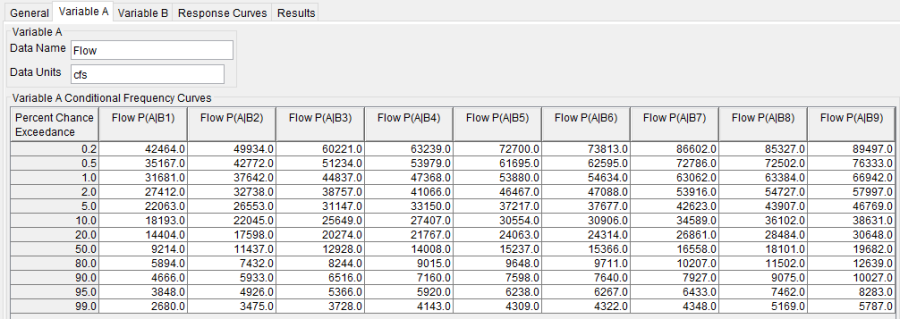The Variable A tab is used to define the frequency curve for variable A. This tab will look different based on the user's selection on the General Tab. The Variable A tab will look like Figure 1 when "A and B can be Assumed Independent" is selected on the General tab. Since variables A and B are independent, there will only be one frequency curve for variable A.
As shown in Figure 1, the user can choose to define the curve manually or select an existing study analysis. When the Manual Entry option is selected, the user must define the Data Name and Data Units. Then the user must enter the frequency curve for variable A. A frequency curve value must be defined for each percent chance exceedance ordinate in the table. When the Existing Study Analysis option is selected, the dropdown list will be active and the user can choose any Bulletin 17 or General Frequency Analysis in the HEC-SSP study. The variable A frequency curve table will be populated with the frequency curve when an analysis is selected. The program uses the statistics from the selected analysis and computes the frequency curve that populates the table.

The Variable A tab will look like Figure 2 when "A and B can not be Assumed Independent" is selected on the General tab. A conditional variable A frequency curve assumes variables A and B are not independent, so there will be a separate variable A frequency curve for each variable B index value.
As shown in Figure 2, the user must define the Data Name and Data Units. Then the user must manually enter the variable A frequency curve for each index value of variable B. This involves extracting the annual peak values for variable A that occur for each discrete range identified on the variable B duration curve and performing a separate frequency analysis on each set of variable A data. Also, a frequency curve value must be defined for each Percent Chance Exceedance ordinate in the table.

Press the Plot button located at the lower left corner of the Variable A tab to open a plot of the variable A frequency curve(s).